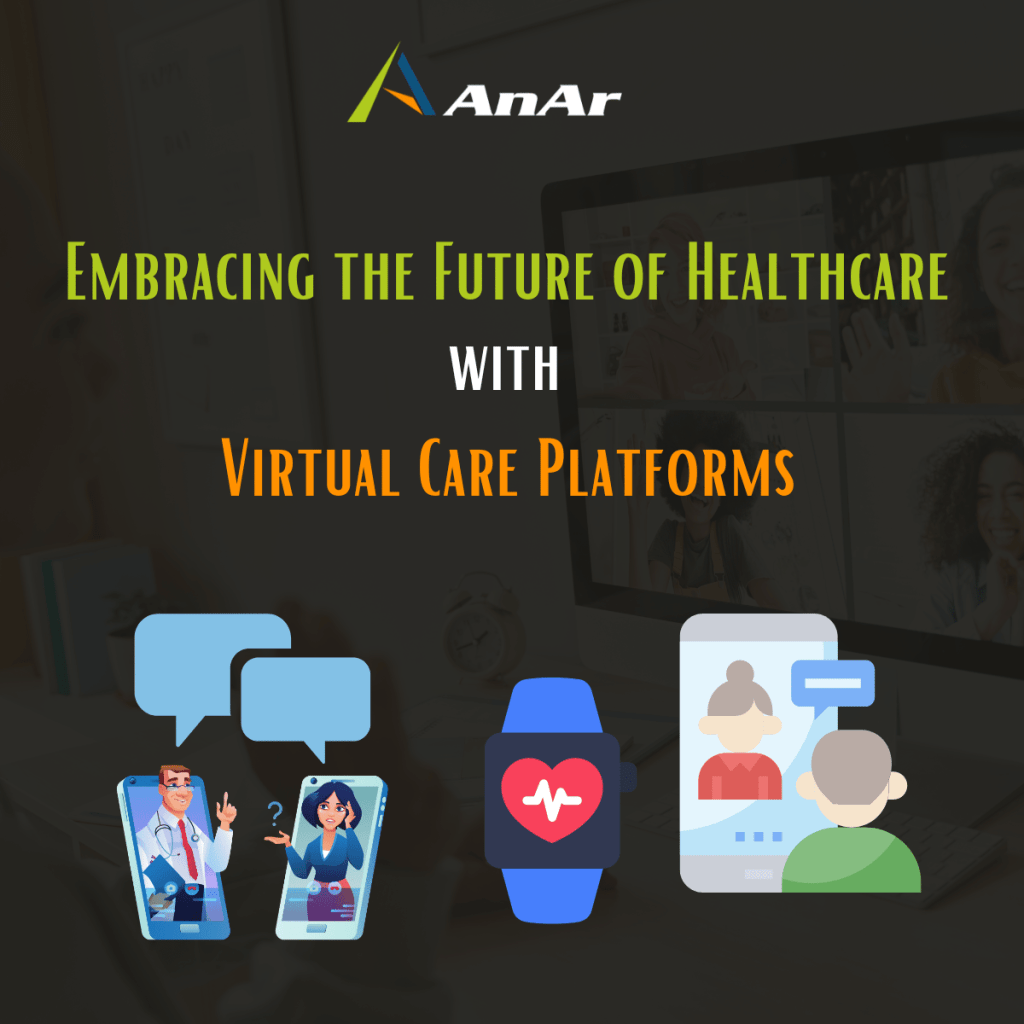Key to Product modernization Services

People
Providing talent with a silo-free work environment and recognizing them as the most crucial component of the firm works wonders. Strategic sourcing and skill development are two of our specialties.



Metrics
The correct development life cycle metrics are what determine the customer value. We assist clients in selecting the appropriate measures to gauge their progress and regularly incorporate comments as input for better results.
Portfolio Services
Insights on Product Innovation and Strategy Services
- HIMSS 2024 Through Our Lens: AnAr Solutions on the Forefront of InnovationEmerging from HIMSS 2024, AnAr Solutions shares a vision for a healthcare landscape transformed by AI, where technology enhances rather than replaces the human touch in patient care.
- Embracing the Future of Healthcare with Virtual Care PlatformsVirtual care platforms are emerging as the transformative force shaping the future of healthcare delivery, offering convenient, accessible, and personalized care.
- How do we enhance healthcare data protection? – A strategic approach!Discover the critical steps healthcare providers can take to protect patient data against rising cyber threats. From encryption to third-party risk management, learn how to build a robust defense.
FAQ
Why is Legacy Application Modernization Necessary?
Businesses must continuously modernize their legacy applications to stay up to date with new technology to remain profitable and guarantee excellent customer service. Online and mobile commerce also puts a burden on older IT systems, and application executives need a large capital to handle the ever-growing technical debts. The only solution to this is for software vendors to promote flexibility by updating legacy software with contemporary architecture, human-centered design, and a friendly interface (UI).
Companies with legacy systems must look for methods to integrate new technologies while harvesting existing technology to maximize IT investments as digital disrupters create new IT ecosystems. Modernizing existing or outdated software might help you stay competitive in a world where change is the only constant.
When is it appropriate to employ the rapid application development methodology?
There are several ways through which you can modernize your legacy systems. Below are some of the ways to modernize your legacy systems –
- Cloud migration - Transitioning to a public, private, or hybrid cloud infrastructure after analyzing the organization's current setup to allow for safe remote data access.\
- Technology modernization - Devising complex plans to manage code and system updates, and establish the best design and development framework.
- Data platform modernization - Utilizing modernizing technologies like AI-ML and Big Data analytics to extract operational value from data.
- Infrastructure modernization - Accelerating sustainable growth by reducing reliance on legacy systems through automation, virtualization, application migration, and containerization.
What is site reliability engineering (SRE)?
Site reliability engineering (SRE) is a software engineering approach in the domain of information technology operations. Software is used as a tool by SRE teams to manage systems, address issues, and automate operational tasks.
Site reliability engineering (SRE) enables engineers or operations teams, who use software and automation to address issues and manage production systems, the jobs that historically have been performed by operations teams, usually manually.
Ben Treynor Sloss, a member of the Google engineering team, is credited with developing the idea of site reliability engineering. System administrators who oversee tens of thousands or even hundreds of thousands of machines can more easily administer complex systems through code, which is more scalable and long-lasting.
The natural conflict that inevitably arises between development teams, who want to continuously release new or updated software into production, and operations teams, who don't want to release any new software or updates unless they are certain they won't result in outages or other operational issues, can also be significantly lessened or eliminated by SRE.
What is containerization?
Containerization is a type of virtualization where applications operate in separate user zone containers while utilizing a common operating system (OS). One advantage of containerization is that a container is effectively a completely packaged and transportable computing environment.
Containerization enables faster and more secure application development and deployment. With conventional means, code is created in a particular computing environment, and when it is transferred to another location, it frequently has faults and errors.
Since all applications share the same OS kernel, there is minimal overhead during startup and no need to build up a separate guest OS for each one thanks to containerization technology. Containerization is frequently used to package up the numerous separate microservices that comprise modern apps due to its great efficiency.
What is container orchestration?
The majority of the operational work necessary to execute containerized workloads and services is automated using container orchestration. Containers' deployment, management, scaling, and networking are all automated through container orchestration. Container orchestration might be useful for businesses that must install and oversee hundreds of servers and containers.
Any environment where you employ containers can benefit from container orchestration. Deploying the same program across many settings can save you from having to redesign it. Additionally, the orchestration of services like storage, networking, and security is made simpler by the use of microservices in containers.








